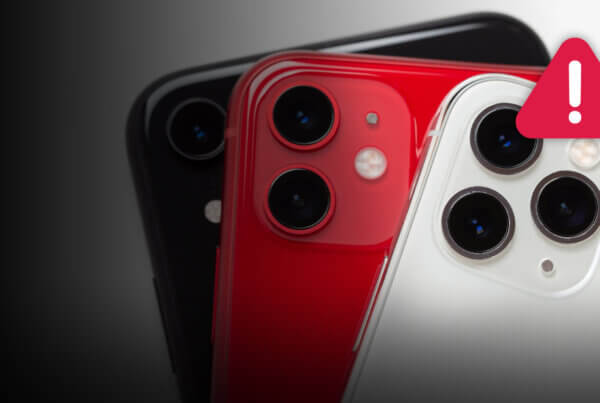Using RFPs to coordinate and compare marketing measurement partners
The mobile marketplace is an ever-changing landscape that shows no signs of slowing down. The changes in rules and regulations plus new technologies can overwhelm almost anyone. As reported by AdColony, by 2023 mobile ad spend will surpass 76% of total digital spend.
As a marketer, how can you be sure you are being effective with your ad budgets? How can you be sure you aren’t using three partners when just one would be enough? Luckily, you don’t need an entire marketing team to answer most of these questions. Using simple marketing tools, you can start off in the right direction, and one of these is the request for proposal (RFP).
What is an RFP?
A marketing RFP is a straightforward questionnaire that organizes your information and enables you to compare marketing service providers whether they be ad agencies, consultants, user lifecycle platforms (SailPoint, BetterCloud), or a mobile measurement partner (MMP). RFPs are useful for both a single project and for longer-term partnerships because they allow you to be more objective in your decisions.
The best part of using an RFP is that it will allow you to flesh out exactly what you’re looking for since you will be the one asking the questions. Nothing is worse than jumping on a call with a prospective partner and being unable to explain what your needs are. Once the scope is fully understood, you can compare competitors’ skills and rates to find the right partner.
Most importantly, RFPs enable marketers to force partners to clearly articulate how their respective solutions solve complex business problems.
Why use an RFP?
An RFP is a tool unlike any other. Although you may achieve the same results without using one, let’s think about some real strengths that RFPs bring to the table.
- They are helpful in collating all value propositions from RFP participants for accurate side-by-side comparison.
- They force participants away from relying on marketing collateral and toward articulating real-world applications to solve problems.
- They help uncover areas of focus and expertise that marketers may not have known existed.
- They help marketers make decisions based on facts rather than conjecture.
With a good RFP you can reduce overall cost by eliminating overlap, aligning facts and objectives, and truly understanding your options. It is important to force prospective partners out of their generic sales pitch and into more practical information you can use to compare and contrast.
When should you use an RFP? What makes it different?
RFPs should be utilized as soon as you have defined a project where you will be using third-party marketing partners to achieve your goals. RFPs are different from a request for information (RFI) where you are asking for details to help define a project scope. When you are ready to ask potential partners the question, “This is what I need, now what can you do to help me accomplish it?” It’s time for an RFP.
An RFP sits right after you have a defined project scope, budget, and timeline but before you should start looking for quotes. A crude analogy, but accurate, is having a good dating profile online. You know what you want, but you don’t know who the right partner is. With RFP in hand, you can start reaching out and the right businesses will have the right answers.
Example:
I am a brand new app developer who just uploaded my mobile app to the Google Play Store and Apple’s App Store. I am looking for ways to promote my app, but it’s just me and a small team of developers who don’t have a lot of experience in mobile marketing. I sit down and outline a project for my next steps. I have an idea of who my audience is, but I need some metrics on how to target them. Since I am going to be using deep links in most of my advertising, I need support for that. I also need to measure attribution both with the initial install and in-app events so that I can find points of engagement and make informed business decisions.
I have heard about MMPs, but I’m not sure what they offer, and I don’t have time to research. With the RFP, I contact a representative from each of the MMPs and send over an RFP with some of the following questions:
- I plan on running campaigns with Google, Facebook, and Apple. Can you measure the effectiveness of my ad spend?
- I need to measure activity in my app with metadata. Can you help with that?
- Can you help me find the right audience to target with ads?
- Can you give me insights into the most effective ways to market my app in the app stores?
- Do you support deep linking?
- Why should I choose you? What makes you stand out from the crowd?
I remember that in an RFP, there are no stupid questions. A great marketing partner loves to help fill in gaps or add clarity where it’s needed. I don’t have to be an expert in everything, I just need to know to ask the right questions. Now I’m thinking like a CEO!
When I get a reply from each of the MMPs, I can see what they offer in each section of the RFP. I can find where some might offer more granularity and more access to my data and others might fill in some gaps where the others lack. In some cases, I can utilize one partner for all my needs, or it may make more sense to use more than one.
As my installs grow, so will my needs. I will keep using RFPs as projects come up, and I’ll know that partners will be changing their offerings as they grow as well.
What’s next?
The example above was for an MMP, but an RFP can be used for many partners from ad agencies to business intelligence platforms. To get started, Kochava has an easy-to-use and customizable RFP template that you are free to use across your projects.
Fill out the form below to download the template. Be sure to check the box for newsletter signup to stay updated for more ways to plan for success!





